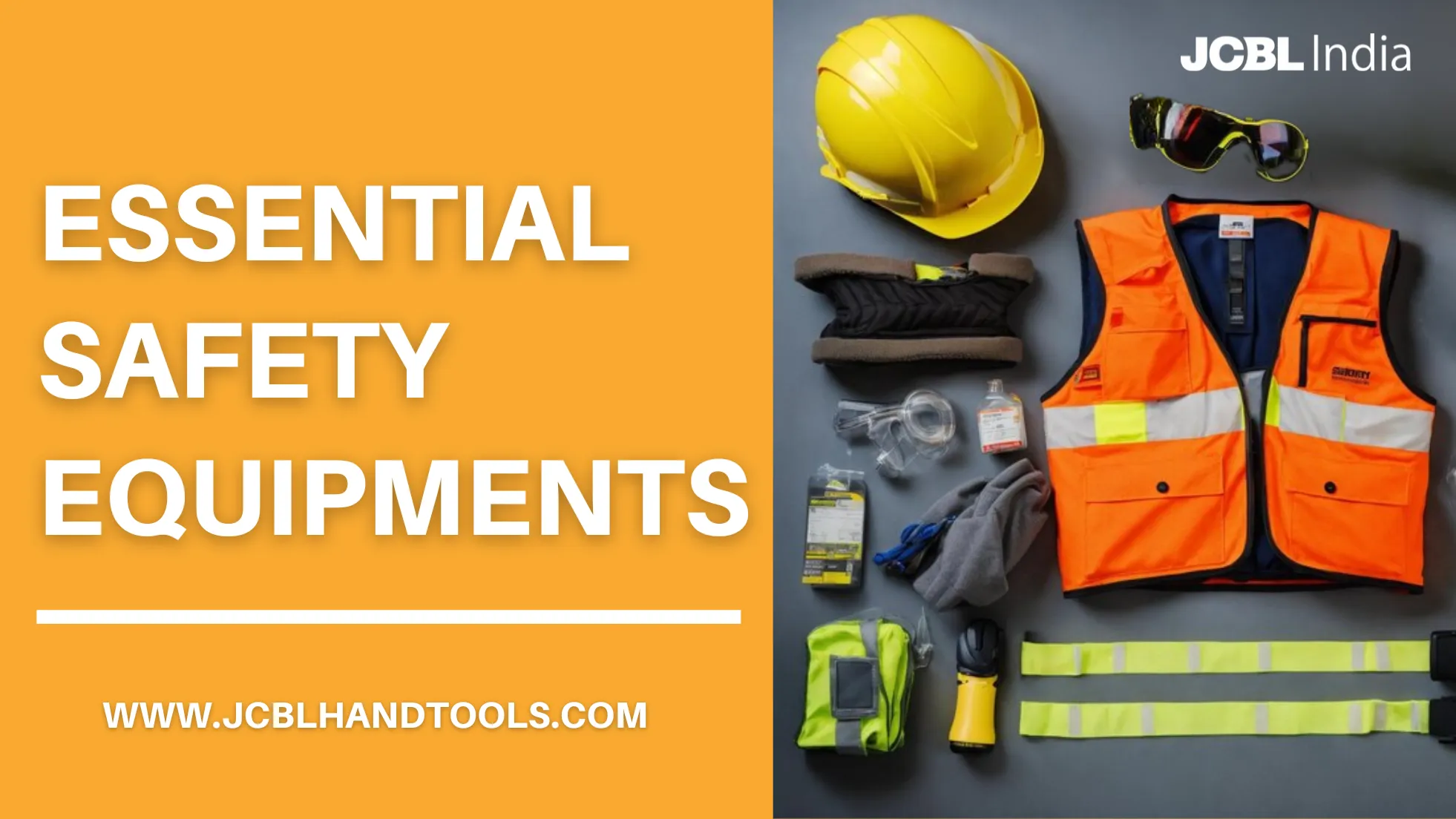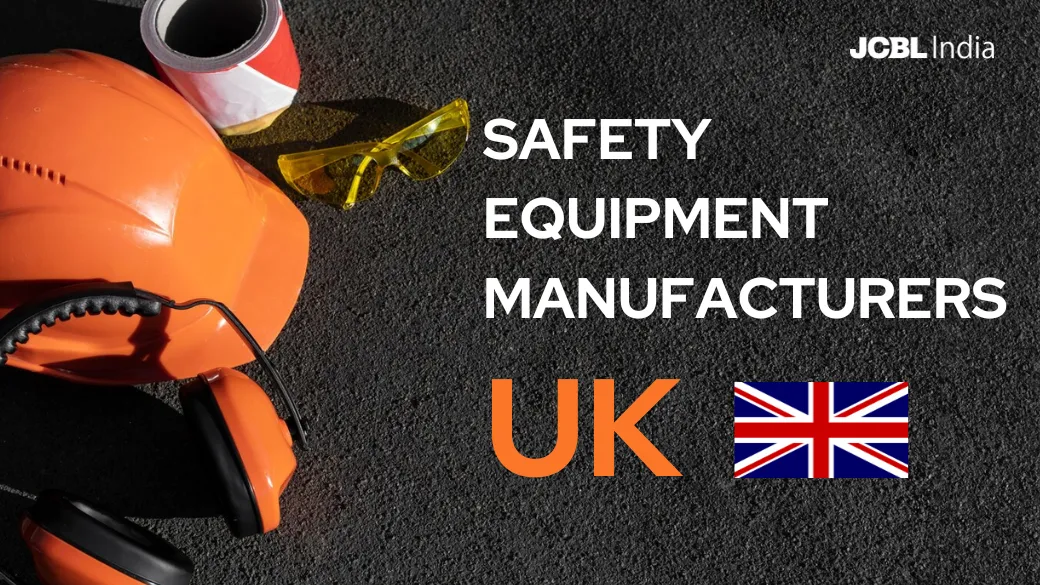Essential Safety Equipment When Using Hand Tools

Hand tools are indispensable in various industries and DIY projects, providing precision and control in tasks ranging from carpentry to metalworking. However, their use can pose significant risks if proper safety measures are not taken. This detailed guide outlines the essential safety equipment you must have when using hand tools to ensure your safety and efficiency.
Why Safety Matters
Using hand tools without the proper safety equipment can lead to injuries ranging from minor cuts and bruises to severe lacerations, fractures, and even long-term disabilities. Ensuring you have the right safety gear not only protects you but also enhances your productivity and confidence while working.
10 Must Have Safety Equipments
1. Safety Glasses or Goggles

Eye protection is crucial when using hand tools to shield your eyes from flying debris, dust, and sparks. Safety glasses or goggles are designed to protect your eyes from various hazards. When using hand tools such as chisels, hammers, or saws, there is a risk of fragments or debris becoming airborne. These particles can cause severe eye injuries, including lacerations, punctures, or even permanent vision loss.
Safety glasses or goggles with side shields provide a barrier against these dangers, ensuring that your eyes remain protected.
Features to Look For:
- ANSI Z87.1 Certification: This certification indicates that the eyewear meets the American National Standards Institute’s requirements for impact resistance, ensuring that the glasses can withstand high-velocity impacts.
- Anti-Fog Coating: This feature helps prevent the lenses from fogging up, maintaining clear vision even in humid or temperature-variable environments.
- Comfortable Fit: Adjustable straps or nose pads ensure that the glasses fit securely and comfortably, allowing for prolonged use without discomfort.
2. Work Gloves
Gloves protect your hands from cuts, abrasions, and chemical exposure. They also provide a better grip on tools.
Safety gloves are essential for hand protection while using tools. They shield your hands from sharp edges, splinters, and hot surfaces, reducing the risk of cuts, abrasions, and burns. Additionally, gloves improve your grip on tools, especially when working with oily or slippery materials, enhancing control and preventing accidental slips.
Features to Look For:
- Material Appropriate for the Task: Different tasks require different glove materials. For instance, leather gloves offer durability and protection against sharp objects, while nitrile gloves are suitable for handling chemicals and providing puncture resistance.
- Padded Palms: Padding in the palms adds extra cushioning and reduces the impact on your hands, making it more comfortable to use hand tools for extended periods.
- Snug Fit: A good fit ensures that the gloves do not interfere with your dexterity or movement, allowing you to handle tools with precision.
3. Hearing Protection

Prolonged exposure to loud noises from tools like hammers or saws can cause hearing damage.
Hearing protection is crucial when working in environments with high noise levels. Hand tools like power drills, hammers, and saws can produce noise levels that may cause hearing loss if exposed for prolonged periods. Using earplugs or earmuffs reduces the risk of noise-induced hearing damage.
Features to Look For:
- Noise Reduction Rating (NRR): The NRR indicates how much noise the hearing protection can block. A higher NRR value means better protection. Look for devices with an NRR of 25 dB or higher for effective noise reduction.
- Comfortable Design: Earmuffs should have cushioned ear cups, and earplugs should be made of soft, hypoallergenic material to ensure comfort during extended use.
- Adjustable Fit: Ensure that the hearing protection can be adjusted to fit snugly, providing an effective seal against noise.
4. Respiratory Protection

Respirators protect you from inhaling harmful dust, fumes, and chemicals, especially in enclosed or poorly ventilated areas.
Respiratory protection is essential when working with materials that produce dust, fumes, or chemical vapors. Tasks like sanding, grinding, or working with certain chemicals can release airborne particles that are harmful when inhaled. Respirators filter out these particles, protecting your respiratory system from damage.
Features to Look For:
- NIOSH Certification: The National Institute for Occupational Safety and Health (NIOSH) certifies respirators that meet their standards for effectiveness. Ensure your respirator has this certification.
- Suitable Filters: Different tasks require different filters. For example, N95 respirators filter out at least 95% of airborne particles, while organic vapor cartridges are needed for protection against chemical fumes.
- Comfortable Fit: A good respirator should have adjustable straps and a secure seal to ensure no air leaks, providing effective protection.
5. Safety Helmet
A safety helmet protects your head from falling objects, bumps, and other potential impacts.
Safety helmets are critical for protecting your head from impacts, falls, and flying debris. In construction or industrial settings, there is a constant risk of objects falling from heights or accidental head collisions with fixed structures. Helmet absorb and distribute the force of impacts, reducing the likelihood of severe head injuries.
Features to Look For:
- ANSI/ISEA Z89.1 Certification: This certification ensures that the helmet meets the safety standards for impact protection set by the American National Standards Institute and the International Safety Equipment Association.
- Suspension System: A well-designed suspension system inside the helmet helps absorb and distribute the impact force, providing better protection and comfort.
- Adjustable Fit: Ensure that the safety helmet can be adjusted to fit securely and comfortably, providing continuous protection without slipping.
6. Steel-Toed Boots
Steel-toed boots or safety shoes protect your feet from heavy objects, punctures, and other workplace hazards.
Steel-toed boots are essential for foot protection in environments where heavy objects can fall or where there are sharp objects on the ground. The reinforced steel toe cap shields your toes from crush injuries, while the robust construction of the boots provides overall foot protection.
Features to Look For:
- ASTM F2413-18 Compliance: This standard specifies performance requirements for protective footwear, ensuring that the boots offer adequate impact and compression resistance.
- Slip-Resistant Soles: Soles with good traction help prevent slips and falls, especially on wet or oily surfaces.
- Comfortable Fit: Look for boots that offer adequate arch support and cushioning to reduce fatigue during long hours of wear.
7. Tool Belt
A tool belt keeps your tools organized and within easy reach, reducing the need for frequent bending or stretching.
A tool belt is a practical accessory for anyone using hand tools regularly. It allows you to keep your essential tools organized and within reach, reducing the need to constantly move around to fetch tools. This not only improves efficiency but also minimizes the risk of accidents caused by unnecessary movement or cluttered workspaces.
Features to Look For:
- Durable Material: Choose a tool belt made from robust materials such as leather or heavy-duty nylon to ensure longevity and resistance to wear and tear.
- Multiple Compartments: A variety of pockets and loops allow you to organize tools effectively, ensuring that each tool has a designated place.
- Adjustable Waist Size: Ensure that the tool belt can be adjusted to fit comfortably around your waist, providing easy access to tools without restricting movement.
8. Knee Pads

Knee pads protect your knees when working on hard surfaces for extended periods.
Knee pads are crucial for tasks that require prolonged kneeling, such as installing flooring, gardening, or certain types of maintenance work. They cushion your knees against hard surfaces, reducing the risk of knee injuries and long-term joint damage.
Features to Look For:
- High-Density Foam: Knee pads with high-density foam offer better cushioning and shock absorption, protecting your knees from hard impacts.
- Adjustable Straps: Ensure that the knee pads have adjustable straps for a secure and comfortable fit, preventing them from slipping during use.
- Durable Outer Shell: A tough outer shell protects the foam padding from wear and tear, extending the lifespan of the knee pads.
9. First Aid Kit

Accidents can happen, even with the best precautions. A well-stocked first aid kit allows for immediate response to minor injuries.
Having a first aid kit readily available is essential for promptly addressing any injuries that occur while using hand tools. It ensures that you can treat minor cuts, scrapes, burns, or other injuries on the spot, preventing them from becoming more serious.
Features to Look For:
- Comprehensive Supplies: A good first aid kit should include bandages, antiseptic wipes, adhesive tape, sterile gloves, gauze pads, and other basic medical supplies.
- Emergency Instructions: Including a guide or instructions for emergency procedures ensures that you can provide effective first aid even if you’re not a trained professional.
- Portable Design: Ensure that the kit is portable and easily accessible, allowing you to carry it to different work sites or locations as needed.
10. High-Visibility Clothing

High-visibility clothing ensures you are seen in low-light conditions or busy work environments, reducing the risk of accidents.
High-visibility clothing is essential for safety in environments where visibility is reduced, such as construction sites, road work, or areas with heavy machinery. Bright colors and reflective strips make you more visible to others, reducing the risk of accidents caused by low visibility.
Features to Look For:
- ANSI/ISEA 107-2015 Certification: This certification ensures that the clothing meets the standards for high-visibility safety apparel, providing effective visibility in various conditions.
- Bright Colors with Reflective Strips: Look for clothing that combines bright colors (like neon yellow or orange) with reflective strips to ensure maximum visibility.
- Comfortable and Breathable Material: Choose materials that are comfortable to wear for extended periods and allow for adequate ventilation to prevent overheating.
Conclusion
Ensuring you have the right safety equipment when using hand tools is paramount for preventing injuries and maintaining a safe work environment. By investing in quality safety gear and following best practices, you can work confidently and efficiently, knowing you are protected.
Remember, safety is an ongoing commitment. Regularly review and update your safety practices and equipment to adapt to new tools and tasks. Stay safe and work smart!







